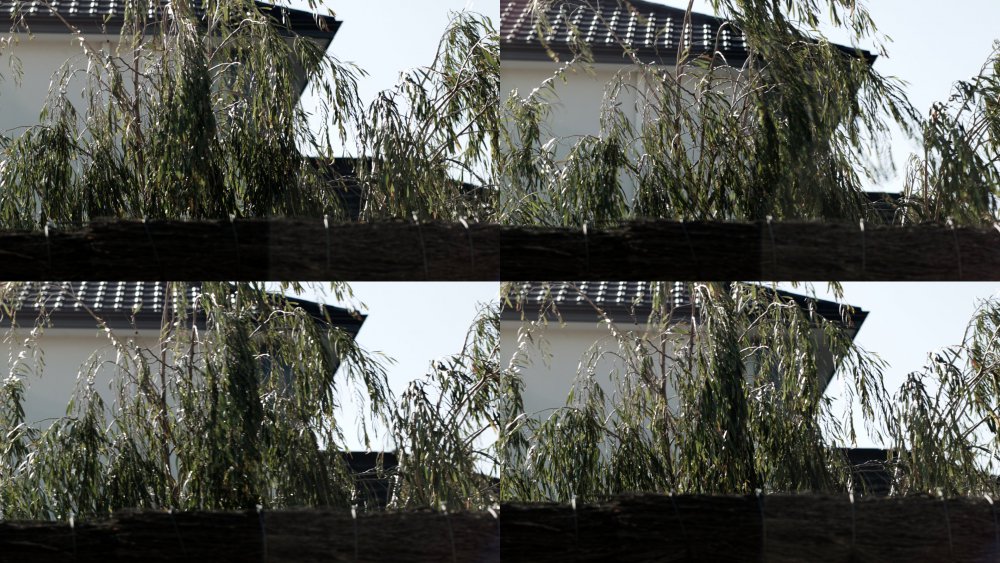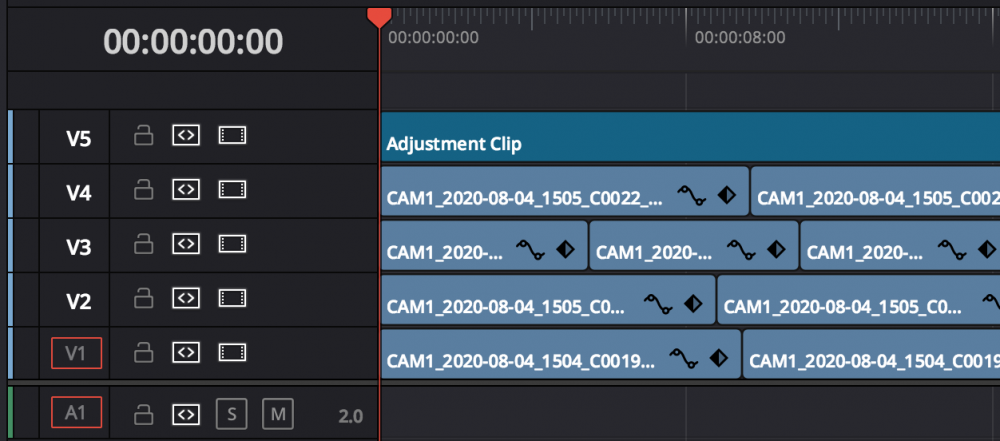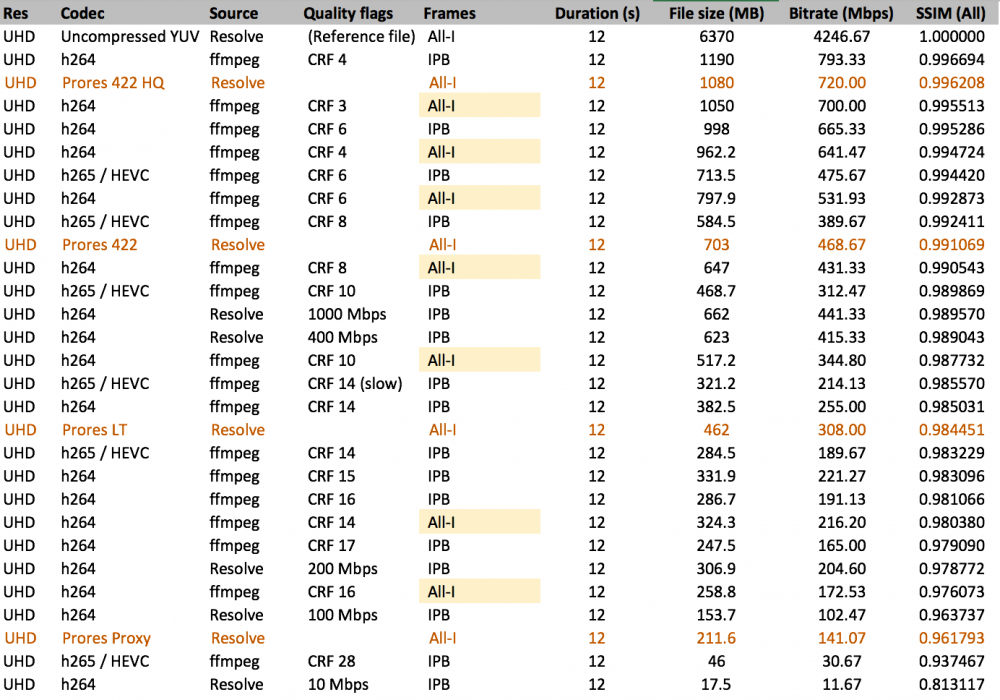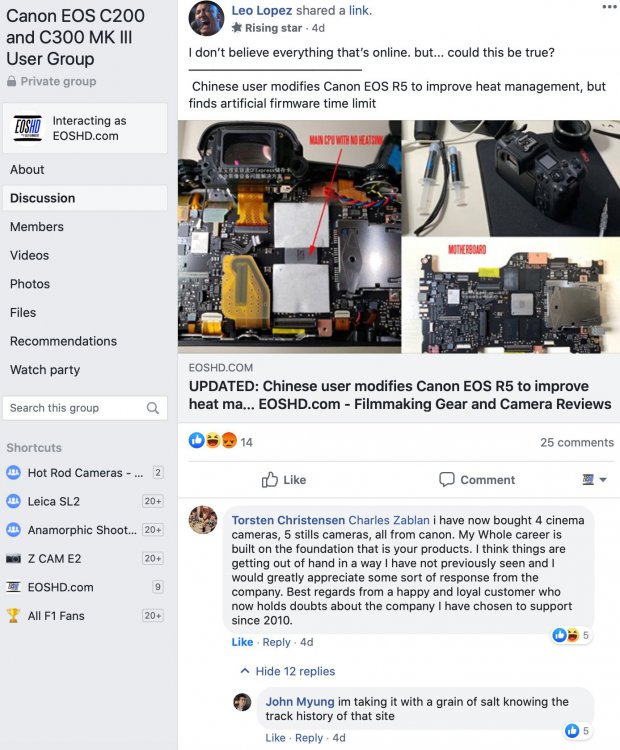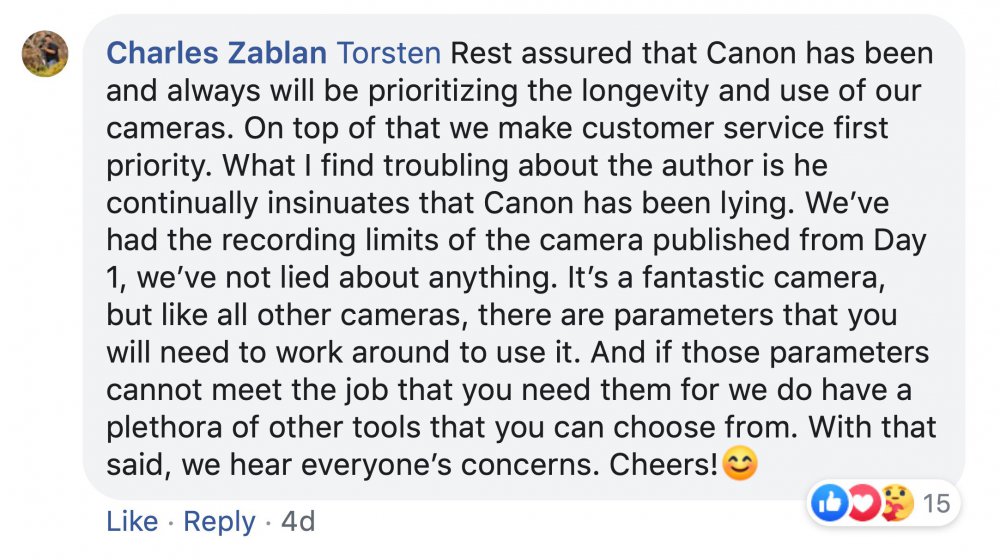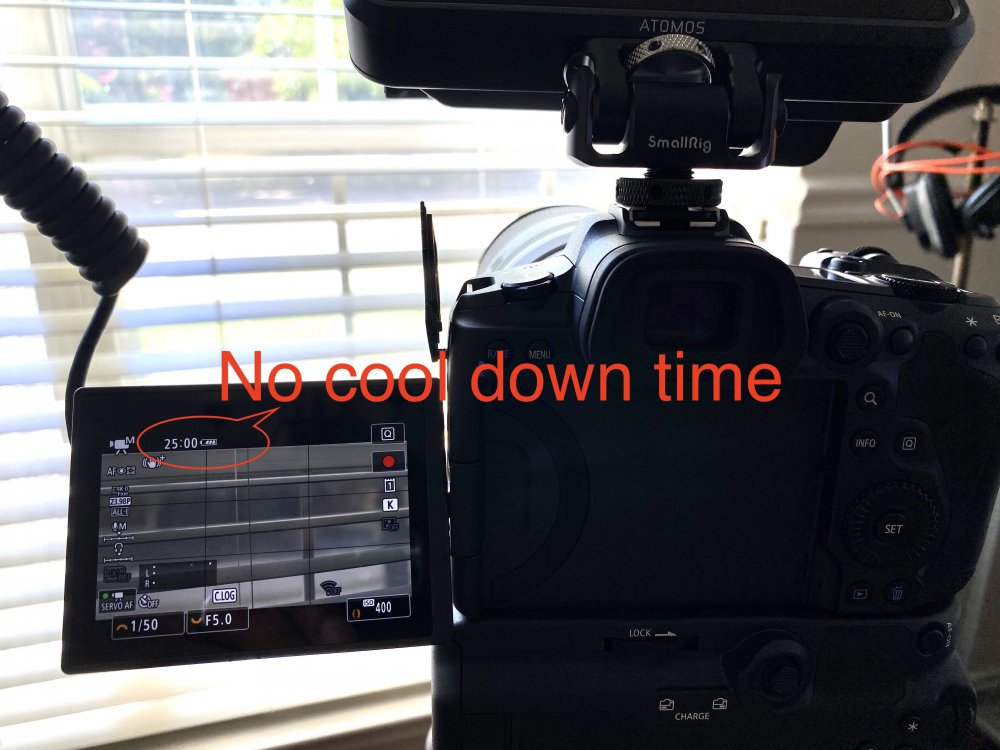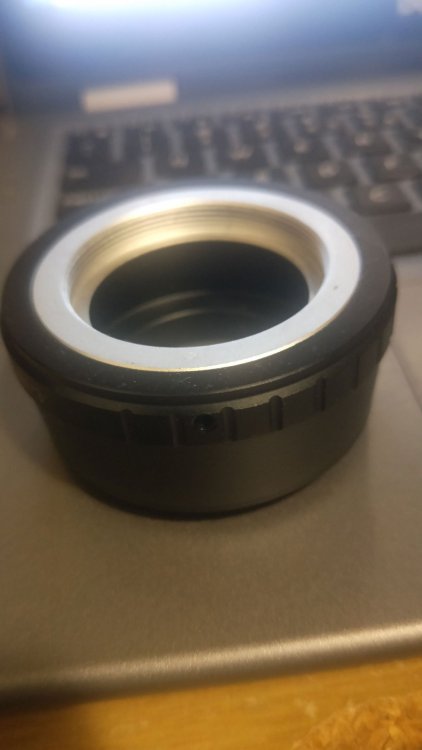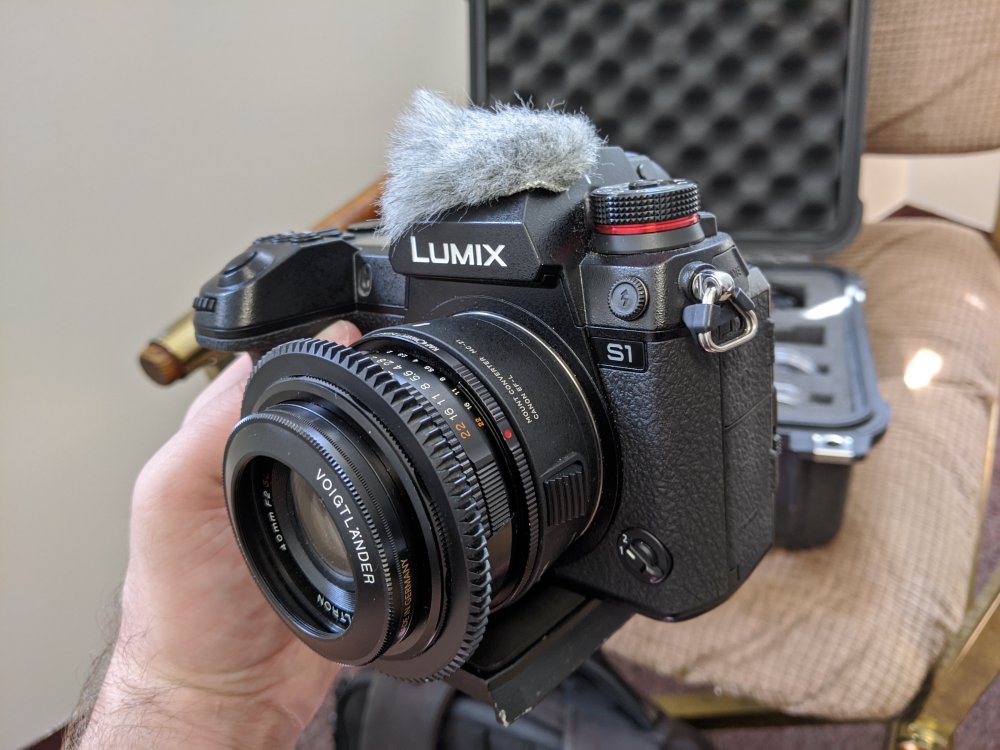Leaderboard
Popular Content
Showing content with the highest reputation on 08/15/2020 in all areas
-

Your Favourite Lighting Gear
Olivier and 4 others reacted to Oliver Daniel for a topic
Lighting is pretty much the most important thing for what we do. It’s what makes your images sing. Here’s a bunch of lights I highly recommend: 1. Falcon Eyes F7 Ridiculously awesome light for the price. Everyone should have at least one. Super bright for a small light. Very useful. Essential. Possibly my favourite right now. 2. Falcon Eyes 24TDX II Flex lights are expensive. Not this. Build quality is great. Super useful. Waterproof. Put anywhere! 3. Luxli Taiko In my opinion, better than the Arri Skypanel which is 3-4 times the price. Best colour accuracy I’ve ever seen and very easy to use. Only downside is the power unit. Feels a bit cheap and not long enough. 4. Godox S30 I think this makes the $3k Dedolight equivalent almost obsolete. For 10% of the price? Super optics for the projection attachment. Downsides are the power goes down to 10w from 30w when using batteries. 5. Colorspike The light pattern customisation is immense and looks way more organic than preset effects from other lights. An incredible tool. Only downsides is the carry case is a bit “meh” and diffuser is fiddly. 6. Astera Titan Tubes These are way more expensive than other mentioned lights. They share some ideas with the Colorspike’s but on a much higher level. These things are insane and worth every penny. I don’t own them but what they can do.... wow!! Downsides... 8 tube case is very very heavy. They are expensive. What are your current favourite lights?5 points -
Panasonic S5 Entry Level Full Frame seems to be real...
Matt Hollman and 3 others reacted to Video Hummus for a topic
Then there are some like Brandon Li that make their living with one or two cameras on gimbals with heavy use of AF. To each their own. I would rather have AF and hit the MF switch when I want to.4 points -
Fotodiox Canon to L-mount adapter with vari ND
Emanuel and 2 others reacted to newfoundmass for a topic
This looks pretty promising. It'll be interesting to see some independent reviews to see how good it is. Has anyone used their non-dummy adapters? How good are they?3 points -
Panasonic S5 Entry Level Full Frame seems to be real...
Geoff CB and 2 others reacted to herein2020 for a topic
I have a GH5 and have always manually focused but there is one simple scenario where I would definitely use AF...on a gimbal. I don't trust AF in 95% of the situations I encounter yet I will not replace my GH5 with a camera that does not have a better AF system. I am typically a one man band run and gun shooter shooting everything from music videos to interviews, the main time I would like AF is in certain situations when doing gimbal work. My GH5 is good enough for most of the situations that I encounter that I don't see a reason to replace it if I cannot use the replacement for both photography as well as video and if the AF is no better than what is in the GH5. If I had a focus puller or had any way to manually pull focus while the camera is on a gimbal it would not be that important to me. It is pretty funny though, just the other day I was shooting a music video and I had just filled the room with smoke and set the lighting and was shooting on the C200; I decided for one of the takes to use AF.....well guess what, the C200 could not focus at all on any of the talent due to the smoke, so back to MF I went. But back to the topic of the S5...it is DOA for me, if this camera is why there is no GH6 then I will be sorely disappointed. I have all the MFT glass I want and my GH5 already has no recording time limits, never overheats, does dual card slot recording, etc. I have a feeling the S5 will have a recording time limit like the S1, may not work with the XLR audio module, and will require me to invest in L mount lenses. It also does not do 4K120FPS, and I still would prefer my Canon 5DIV for photography.3 points -
Very few mirrorless cameras are sold to shoot a feature on, and if they are they are NOT the main audience and buyer for these cameras. DSLR's are being bought buy one man bands, or as gimbal cameras, or for people to take photos/video (Weddings/concerts/music videos) All of those situations benefit from AF. Also these camera's do not exist in a vacuum, all the other brands now have decent video AF.3 points
-

Canon EOS R5 / R6 overheating discussion all in one place
Daai and 2 others reacted to Andrew Reid for a topic
R6 is only 20 megapixel, no excuses really. What is it doing differently to a 20 megapixel GH5 in 10bit 4K? to create so much extra "heat"? And that camera is 3 years older. Full frame sensor doesn't create a lot of extra heat. What's it doing differently to an S1?! Another example of the new-for-2020 style cripple hammer.3 points -

Your Favourite Lighting Gear
TheRenaissanceMan and 2 others reacted to IronFilm for a topic
No joke, but when I saw the title of this thread that is what I came here to write! Sunlight is best. Thus light modifiers can be the best investment, to shape what you've already got.3 points -

Prores vs h264 vs h265 and IPB vs ALL-I... How good are they actually?
John Matthews and one other reacted to kye for a topic
Some cameras shoot RAW and Prores, and some shoot h264 and a few shoot h265. There's lots of bitrates on offer too, 50Mbps, 100Mbps, etc. Some are ALL-I and some are IPB. But how good are they? I couldn't find any comparisons, so I did some myself. What I did was take a few shots from the BM Micro Cinema Camera shot in uncompressed RAW of a tree moving in the wind, and made a single UHD frame by putting them in each corner, like this: Also, they were of different lengths, so I just repeated each one, like this: So we have a test clip that was shot RAW (maybe compressing already compressed footage is easier? I don't know, anyway..), that includes decent movement but isn't some stupid test case that means nothing in real life, that doesn't repeat (because the clips are different lengths), and has some deliberately almost crushed blacks to test the pixelation that h264 and h265 sometimes get in the shadows. Then I exported an uncompressed 10-bit 422 YUV file to use as a reference. After some tests and seeing the file sizes and processing times, I decided to only use the first 12s of the timeline. Then I rendered a bunch of clips, either h264 from Resolve, or h264 and h265 from ffmpeg. I tried rendering h265 from Resolve but had issues, and in this test all the maximum bitrates I tried all created the same size file, so I abandoned that. Common wisdom online is that Resolves h265 export mechanism isn't the best and you should use ffmpeg anyway. Then I compared the compressed clips with the uncompressed reference file, which gives a score called SSIM, which goes from 1 (a perfect match) downwards. Here's the results so far: Here are some observations / thoughts, and some answers to some questions I'd had: In Resolve, H264 seems to top out, as I couldn't get it to export at more than about 400Mbps IPB, but ffmpeg went higher than that quite happily ALL-I h264 doesn't seem to be that different than IPB, at higher bitrates anyway - slightly lower quality and slightly higher file size, but not the 3x I've read around the place Prores isn't that much worse in terms of quality vs compression than h264 or h265, despite being an older codec (although maybe there are versions? I have no idea how prores works.. maybe that's important for this topic?) Different encoders have different levels of quality, so what's in a given camera is likely to differ from these results I guess the real question is, how much h264 do you have to have to equate to Prores? The answer seems to be "about the same bitrate, but probably a little less for an ALL-I codec, and a little less bitrate again if it's an IPB".2 points -

Found a Canon USA rep "customer service first"
PannySVHS and one other reacted to Andrew Reid for a topic
Found somebody who needs a good dose of truth. Let's set the record straight with this Canon rep as customers. https://www.facebook.com/groups/1327837727266187/permalink/3065603700156239/?hc_location=ufi The post permalink is only visible once you join the group. Please be polite. I was a bit edgy and they banned me immediately. The Canon rep who needs convincing is Charles Zablan in reply to the Torsten Christensen comment on the link to the EOSHD blog post. I don't see much humility from him given that I just paid 4380 euros for a duffer. I've put the screen grab below so you can find it in case permalink doesn't work properly.2 points -
The answer is yes. With Vlog upgrade and a recent firmware. They added it at some point with a firmware update.2 points
-

I bought a Canon EOS R5 - potential overheating solutions
Emanuel and one other reacted to mechanicalEYE for a topic
Todays test: Recorded 4K HQ externally with Ninja V - Canon LP Battery in camera for 1 hour continuous with no card in camera. ( at 1 hr the cameras very HOT to the touch ) all this in direct sun light, and very hot. No overheat warning. At the hour mark, I take the camera indoors but continue the recording externally. I immediately insert the CFexpress card while still externally recording. The camera temporarily shuts down but immediately comes back on when the card door is shut, it continues to record externally. still no overheat warning. I shut down the external recording, camera reads 25 minutes available in 4k HQ internally... as well as full times available in all other modes. Switch modes then take two photos back to back. The first photo shows 65C in the exif data for camera temp The second photo shows 64C in the exif data for camera temp... these photos were a second apart.2 points -
Panasonic S5 Entry Level Full Frame seems to be real...
kaylee and one other reacted to Hanriverprod for a topic
Ok. I know many dps shooting tv dramas, indie and studio films in Korea using af. But I guess your experience and reality is all that matters. And I specifically said docus, weddings, bts and indie filmmaking so it vibes with most of you in the West but again I guess your 'pro' opinion is reality. Maybe I need to reboot my simulation.2 points -
Nah it’s because I’m broke now or I’m going to buy it. 😆 Well just kidding. I used to be one of those “I’m to buy it based on one video”, but now I care about workflow more than anything so I try before I buy anything if possible. It amazed me how much money I have saved. 🤣2 points
-
Neither! Get yourself better audio/lighting/grip/support gear instead. Especially as you've got a Samsung NX1, which even in 2020 is still a very solidly good hybrid camera.2 points
-
You're right, assuming you're talking about using these things as intermediaries, but if you've got a camera that doesn't have Prores (like most prosumer cameras) then you don't have that choice. OR, you do have that choice, but the option involves adding an external recorder for many hundreds of dollars, plus all the extra size, weight, and complexity of additional battery types, chargers, etc. With things like the P4K/P6K and others making Prores more affordable now, I suspect that many will be tempted towards one camera or other because "Prores is a professional format and h26x is a consumer / delivery format" but I wanted to test if that really did matter. After all, the only comparisons I could find were that h265 was 100x better than Prores 4444, which is obviously ridiculous. I'm about to update my ageing MBP and am looking forward to the better h265 support that will come with a new OSX and latest Resolve (I can't upgrade Resolve until I update OSX and there's a limit to how new your OSX version can be on a given hardware setup, so I'm kind of stuck in the mud until I upgrade my hardware). I just uploaded a test file to YT right now. H264 10-bit All-I. Worked just fine. ffprobe reports: I've found YT to be pretty good with input file formats. Absolutely. I wouldn't advocate for h264/h265 as intermediaries at all. DON'T DO IT KIDS!! 😂😂😂 No worries. Personally, I find that doing a few hours / days of testing is far more effective than doing hours / days googling (which often does not lead to the truth) or, worse still, is hanging out online and hearing from people that just repeat misinformation and you end up making a bad decision that either wastes many hundreds / thousands of dollars or means you have to deal with lower quality footage for months / years until you realise that you were mislead. I've wasted thousands on equipment I don't use and also spent years shooting with bad settings or flat-out with the wrong equipment because of misinformation gathered online - even from EOSHD, although it's definitely been better than average for camera forums. I also finding that posting the results forces me to do everything properly as I will be explaining it, and it's a bit embarrassing if you get something wrong, so that's motivating too! Of course, I stuffed up my reference file above, and am re-rendering and re-evaluating all the modes again... such is life and learning 🙂 I'd really like to be doing perceptual quality testing, as we look at our footage with our eyes and brain, not our statistical analysis software, but typically this involves having massive double-blind tests, which are beyond my ability to perform, so I leverage off of metrics like SSIM, which are reliable and repeatable and comparable. Does Prores at a given SSIM have a different feel than h264 at the same SSIM - you'd imagine so. At this point I'm still very satisfied with my testing though, as at least I have some idea now of what is what. I would imagine that cameras would increasingly offer h265 10-bit ALL-I codecs, and I think that's a good move. h265 is better than h264 (more efficient, giving either better quality at identical bitrates or same quality at lower bitrates) and ALL-I formats render movement nicer and are dramatically easier to deal with in post. One thing I am very conscious of is that you can go two routes for your workflow. The first is to render high quality intermediaries and abandon your SOOC files. For this you'll typically choose a friendly ALL-I codec, which trades decoding load for high data volumes, requiring an investment in large and fast storage. You will edit and grade and render from these intermediaries. The second is to render low quality intermediaries, which you can use for editing, but then revert back to the SOOC files for grading and rendering. This is my workflow and I use 720p "Prores Proxy" which cuts like butter on my ageing MBP and also fits neatly on the internal SSD for editing on the go. The challenge with the second workflow is that you can't really grade on the proxy files, and you definitely can't do things like post-stabilisation or even smooth tracking of power windows. This means that you're back to the SOOC files for grading and which means that you can't play the graded footage in real-time. This compromise is acceptable for me, but not for professional people who will have a client attend a grading session where they will ask for changes to be made and won't want to wait for a clip to be re-rendered before being able to view it. Having SOOC footage that's ALL-I significantly helps with performance of grading from SOOC footage, but it's why professional colourists have five-figure (or even six-figure) computer setups in a sound-proof cupboard and run looooong USB and HDMI cables out to their grading suite. Anyone who balks at the cost of the Mac Pro for example has never seen someone do complex colour grades with many tracked windows on 8K footage live in front of a client. Anything that cannot be explained simply isn't sufficiently understood. I'll get there, I promise 🙂2 points
-
EOSHD testing finds Canon EOS R5 overheating to be fake
Geoff_L and one other reacted to Video Hummus for a topic
I heard it uses the highly technologically advanced Placebo affect to cool the camera! Cutting edge stuff!2 points -
Panasonic S5 Entry Level Full Frame seems to be real...
Jtdiddy and one other reacted to Hanriverprod for a topic
2020 and Panasonic still hasn't sorted out their af smh2 points -
If you look back on the clips that were posted, such as the plane at the airport, you can see that while Komodo has trouble with noise and low light, the color fidelity is not sacrificed as it can be with a lot of cameras in the $6K range. When the lights go down, the bit depth does not suffer: it does not go "thin" or start looking like 8-bit footage when you withdraw light. I can't speak to the colors in the grading process as I haven't downloaded any of the R3D files, but you can probably get it to match any of the modern RED sensors close enough. This is, after all, intended as a gimbal camera and not as a main one. So it is somewhat taking the place of the very capable RED Raven 4.5K, albeit in a very different marketplace. Nowadays, for just two thousand more, you can get a Kinefinity MAVO LF ($8K brain), which is an incredible camera for the price and I think a much better option as a proper cinema cam:2 points
-
Can you record V Log in S1 6K Photo Mode?
PannySVHS reacted to HockeyFan12 for a topic
Assuming the camera has the paid upgrade. Please say yes? (Unless the answer is no.)1 point -
Fotasy do one. Out of stock at Amazon so you might have to hunt a bit to get one. https://www.amazon.com/dp/B004X9Z32E/ref=cm_sw_r_cp_awdb_btf_t1_ZxgoFbMPTA4FN1 point
-
Can you record V Log in S1 6K Photo Mode?
HockeyFan12 reacted to newfoundmass for a topic
That should work well, yeah. You might even get better results than with the XLR1. I use the XLR1 as much for convenience than anything.1 point -
Beware the next firmware update perhaps. Canon might give us 5 minutes extra recording time in 4K HQ, 4k 60, and 4K 120, but they might "fix" the HDMI recording length without cards.1 point
-

Panasonic S5 Entry Level Full Frame seems to be real...
Hanriverprod reacted to fuzzynormal for a topic
You're not wrong. Good specs help sell cameras. People like me say they don't need it, but in a few years when all manufacturers offer it and it's decent across the board even on middle and low-end models, I'll end up with it --and when that happens I assume I'll find the same practical use for it as everyone else, for sure. Just not going out of my way to acquire it right now.1 point -

Your Favourite Lighting Gear
noone reacted to Oliver Daniel for a topic
I’m pretty sure Neewer stuff is a re-branded collection of gear from several manufacturers, including some Godox stuff, like the SL-60. Or they are just total copies.1 point -
A guy shot 8K video in Paris and was surprised it overheated on a day shoot as he was filming only short clips. He had to leave it overnight to cool down. It wasn't a review, just a report on real world use. For short, personal work and work where line skipped 4K is fine, the R5 will be okay. I wouldn't pay £4k for a smoking gun for a camera and rely on it for Professional work. Regardless of any reports from those who have managed to grab some footage from it. Something which I never doubted. Even Canon wouldn't dare release a camera you couldnt film anything at all.1 point
-
I bought a Canon EOS R5 - potential overheating solutions
mechanicalEYE reacted to Video Hummus for a topic
@mechanicalEYE beta testing for Canon. Non of that behavior makes any sense especially since that same timer will decrease to zero with the camera not recording anything and sitting in a menu. Sounds like a bug in Canons cripple timer implementation.1 point -
Panasonic S5 Entry Level Full Frame seems to be real...
Hanriverprod reacted to Kisaha for a topic
I am not interrogating you, I am genuinely curious. I believe that Koreans can do it differently, and probably they will be the first to use AF. It is that I work a couple of decades in the industry in 3 different European countries and AF is not used at all in higher productions, for a lot of reasons that are well documented in this and other forums. The only time I have used touch AF (and not C-AF) is on non critical shots and it will stay like this. We are talking about an entry level camera here, I do not expect its footage to be nationally televised, here or there, but yes, I demand great AF on a hybrid camera in 2020. Sorry if I sounded too critical, I wasn't, I just know what I know and AF is not really a huge deal for demanding video work, it is more a lower level production thingy, and something for the younger crowds. Vlogers/bloggers/young wedding creators that are not very experienced with focusing and other one man's bands not able to excel on another part of a video production.1 point -
That's pretty much how we were going but not doing that short of clips probably 30 second-1.5 minutes with a few different takes, like I said I think people are blinded by the specs and want to go film long form videos with it and it's a stills camera that does video. I've been beyond stoked on mine but there will always be people who are upset, this camera fits in with my 5D4's and my C200's perfectly but has and will likely forever replace the 5D4's. And like I said there are people trying to make it over heat and when you try to do that guess what, it'll do it but I see very few reviews of people taking it outside and just shooting like they normally would, I take all these sites with a grain of salt. Are you ok? Why are you so quick to just slam other peoples experiences or opinions?1 point
-

Panasonic S5 Entry Level Full Frame seems to be real...
Zak Forsman reacted to fuzzynormal for a topic
Yeah, that's my thing too. Give me a person manually hunting for focus if need be. It's actually a pleasant aesthetic, I think. I'm not knocking anyone that uses AF. My wife does, for example, (she's stills oriented) but I'm just not that into it for motion pictures...and when I see many cool hybrid cameras passionately dismissed because they lack high-end AF capabilities, I'm curious about that rationale. An affordable FF camera like this S5 --made affordable because it's without all the bells and whistles sounds pretty great to me.1 point -
Panasonic S5 Entry Level Full Frame seems to be real...
Nautical reacted to ade towell for a topic
If I had a penny for every time... AF was discussed in a Panasonic thread Zombie skin tones in a Sony thread Cripple hammer (& the new kid on the block - overheating) in a Canon thread I'd be able to buy all of them and still be complaining about not having the perfect camera. The Japanese cartel is alive and well1 point -
Panasonic S5 Entry Level Full Frame seems to be real...
Kisaha reacted to currensheldon for a topic
Been on a lot of doc shoots, some small, some big. I’ve never seen AF used and it has failed me so many times during personal projects or tests that I would never use it on a shoot someone was paying me for. A shot slightly out of focus and then finding focus (like manual focusing) looks totally fine. A shot where the focus suddenly goes to the background or kicks off and starts searching is 100% totally ruined - this “unnatural” AF behavior is too common still. That has happened with Canon and Sony AF too often. I’d rather just hit it myself manually which, honestly, isn’t that difficult.1 point -

My love/hate relationship with the XC10 and grading the C-Log files that I shot
Geoff CB reacted to fuzzynormal for a topic
As you implied, some of your issues are that you're hoping shots not well exposed can be successfully manipulated into a gratifying image. What the photons are doing in your frame to begin with seems to be the bigger problem than the grading. Your reference image of the town from above is a good example of that. Early evening light creates more drama than a midday overcast shot. Sometimes with certain footage, you're never going to get it where you want it to be. In that case you need new footage or just accept it wasn't shot well enough to begin with. As someone that does the latter all the time, I've learned to know when I get a good shot and when I'm trying to make a silk purse out of a sow's ear.1 point -
Hybrid wedding capture. I will manual focus certain static parts of the day but anything that involves subject movement and flitting between stills & video, good AF is a must.1 point
-

Your Favourite Lighting Gear
newfoundmass reacted to aaa123jc for a topic
My favourite is the Aputure 120D II and a few modifiers. Although I mainly do event works so don’t always have the luxury of setting up lights, I use this light whenever I can. It is light and portable, but gives more than enough light unless you need to film in a very big room or have to simulate or fight against the sun. But nowadays there are many competitively priced lights as well. So my favourite may change.1 point -
1) A reflector kit with diffuser/bounce. 2) Aperture 300D to simulate the sun.1 point
-
Multiple RF Cinema Cameras & XC20 coming from Canon
Juank reacted to Avenger 2.0 for a topic
If they keep crippling their new camera's with overheating timers, the RF mount might even die before the EF does 😬1 point -
1 point
-

ATEM Mini Pro ISO Version
UncleBobsPhotography reacted to IronFilm for a topic
There goes Blackmagic once again ignoring the hot new trends of the current year and doing their own thing instead! 1080 per camera is too little for VR Record internally, and use a switcher/combiner for the director/you to monitor what's happening in the scene. Z Cam E2 really is the best option right now for multicam 360VR setup on a "low budget". Careful now, you can't say that in 2020! Hard to know when a much better option than the E2 will come out. If I was to take a wild guess: If the GH6 comes out with a new sensor (which is by no means at all certain, the GH6 might be sticking with the GH5 or GH5S sensor but pushing it further) then perhaps a year later Z Cam (or maybe BMD, but unlikely, think they'll stick with the "Pocket" form factor rather than making another Micro successor?) will bring out a "Z Cam E3" which will be better than the E2 in every way. That's your best bet to wait for? There are always other outside chances, maybe Kinefinity brings out a surprise "Terra Micro" which is amazing? But unlikely. So either get an E2 (or dedicated 360VR camera, not a multicam setup) or pin your hopes on maaaybe something better coming out (which is still going to be a year or two away).1 point -

EOSHD testing finds Canon EOS R5 overheating to be fake
wind1414 reacted to Andrew Reid for a topic
It does't add up does it! 1. CFexpress card throttling... Why would it even break into a sweat recording in 8bit 4K at low bitrates? Yet camera in 4K HQ 8bit quits long before the CFexpress card has had to fully utilise anything close to maximum write speeds. 2. Sensor overheating... I could appreciate this is sensitive to heat, it gets noisy if hot. But it doesn't cut off for external recording doing full pixel readout (8K) for 4K HQ so that's that theory gone and the Chinese thermometer tests show the surface area of the chip is not the main heat source in the camera. 3. DIGIC processor overheating. Well the EXIF temp correlates to camera activity in so much as I observed it go from 46C to 62C in 8K mode. If this temp reading is on a PCB far away from the image processor, it is indicative more of internal air temp and CPU could be 10-20C higher. I could understand if the CPU has a thermal run-away problem past 80C why it would stop. But why would it do so when you add 8bit 4K HQ H.264 to the mix? Pretty much any camera can do that unlimited. And we know the SD card and sensor are not the heat limited parts. So why would this compression tip it over the edge... And why does it need a 2 hour recovery time when it cools down to normal ambient temps pretty much instantly? 4. Menu overheating. Nothing about this makes any sense whatsoever. If the CPU has a fault and it cannot shut down all cores in the menus or something, maybe. I say unlikely. Surely the net processor usage downsampling 8K sensor data to 4K HQ for HDMI is higher than scrolling a list of text 5. Stills / Live-view = reduced runtimes even 0 mins of 8K. This is the other very artificial thing with no basis in physics. It just doesn't make sense that the CPU is happy to go all day in live view or 4K 10bit H.265 from a pixel binned sensor output, but combine this with the 8K sensor output and BOOM processor has had it in less than 15 mins. 6. Recovery times = too long. No basis in real thermal dynamics or temperatures. So it is all a big mystery and one I will be taking to the UK small claims court if Canon doesn't start cooperating or answering these questions.1 point -
hmm well I guess there goes the whole artificial timer conspiracy theory. now all we need is a portable cryogenic device to carry R5 during shoots!1 point
-
Mine does. Those savings pay for the camera bodies. Its the guys who's wives are into the Space Opera genre of Sci-Fi that you have to spare a thought for as they're taking a double hit. Its all fixed lens 2mp 640x480 cameras for them.1 point
-

Panasonic S5 Entry Level Full Frame seems to be real...
Bandido reacted to Matt Hollman for a topic
If this camera has PDAF it has a chance in the consumer market. If not then it will be a hard sell I think.1 point -
EOSHD testing finds Canon EOS R5 overheating to be fake
kaylee reacted to Hanriverprod for a topic
It’s not crippling it’s the cynicism that everyone finds offensive. In fact this is canon’s snarky answer to all the criticism built over the years over their crippling. It’s like the C200. You can have the usual 8bit but you also get the completely impractical raw and also no 10bit which is what most professionals would use. Now you can’t accuse them of crippling. It’s the same cynicism with the R5. You get hq4k AND 8k so you can’t accuse them of crippling. But they can only be used for 20 minutes every 3 hours otherwise just use the line skipping 4k that was meh even 5 years ago. So before you point fingers and say we’re all noobs for pointing out this new level of cynicism from Canon maybe you should look in the mirror and try to see what’s really goin on. Noob.1 point -
Prores vs h264 vs h265 and IPB vs ALL-I... How good are they actually?
User reacted to KnightsFan for a topic
Great tests! One thing I will say is that when I did my ProRes vs H265 tests, I tested on a >HD Raw file in order to maximize the quality of the reference file, to avoid softness and artifacts from debayering. Additionally, my reference file was 4:4:4 rather than 4:2:2... fwiw. The other thing that would be nice is some files to look at, since while SSIM is great to have it's not the only way to look at compression. Also quick question: Are your H.264/H.265 files 4:2:0 or 4:2:2? 10 bit or 8 bit?1 point


